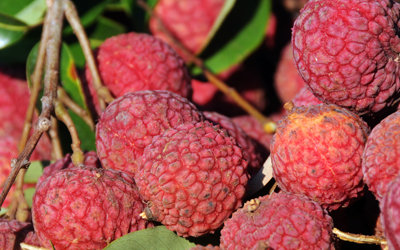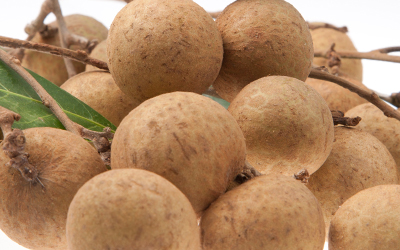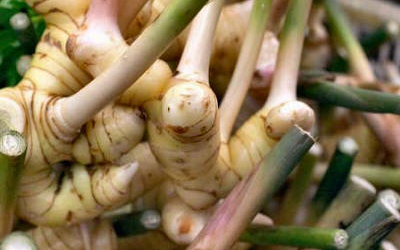
Gewürztraminer has uniquely intense exotic spices and lychee characters that sets it apart from other aromatic varieties. It is considered a major international white variety and in Alsace, where Gewürztraminer has the greatest expression, the style ranges from dry, intensely aromatic richly textured wines to sweet, botrytis-influenced complex styles.
In Alsace, Gewürztraminer’s perfume often jumps out of the glass with lychee, longan and ginger aromas as well as floral notes. Despite its modest acidity, late-harvest Gewürztraminer can age for many years. Leaner versions can be found in Austria and Italy while expressive, vibrant expressions are found in New Zealand and the Northwest United States.
The Asian descriptors for Gewürztraminer are lychee, longan and galangal.

Lychee
Lychee and longan are tropical fruit trees native to South East Asia. Lychee are classified into broadly five different sub-species in China, with one of the more popular species termed “The smile of the Imperial Concubine”. The name’s origin goes back to the Tang Dynasty to a well-known tale of Imperial Consort Yang Guifei, one of the “Four Classic Beauties of China.” Yang loved lychees. And in order to please his beloved, the Emperor ordered fresh lychees to be delivered from thousand of miles away just to win her smile. Until today, lychee remains a popular fruit found in season during the summer months in fresh markets throughout Asia. They are extremely juicy and the level of sweetness can range, depending on the sub-species, from refreshing and light to luscious and syrupy.

Longan
Longan, also known as Guiyuan, are frequently used in China for soup or desserts. Known for its medicinal properties to improve blood circulation, dried longan is also prepared in Chinese tea and herbal medicine. Similar to lychee, longan had been favoured by the Imperial Court of China since Han Dynasty and was cultivated solely for the enjoyment of the Emperor. When peeled, the translucent white flesh of the longan wrapped around a black pit resembles an eye. Hence, the name literally means “Dragon’s Eye.” Compared to lychee, the flavour of longans have crispier, cleaner style of sweetness.

Galangal
A close relative of ginger, galangal is a popular ingredient used in Southeast Asian cuisine, especially Thai and Vietnamese. It is often used in soup to impart flavour reminiscent of ginger, cardamom and pepper with a hint of lemony sourness. Galangal is an essential ingredient often used together with lemongrass, bird-eyed chillies, kaffir lime leaves and an assortment of tropical spices.
A full-bodied and aromatic variety, Viognier finds its ultimate expression in Condrieu and Château Grillet. With fragrant Thai jasmine aromas and ripe apricot notes, Viognier is a heady, full-bodied, high alcohol wine that can develop notes of honey and dried flower notes with age. However, most Viogniers are meant for early consumption. In Northern Rhône, Viognier’s opulent style is tamed with good levels of acidity and minerality and produced as a single variety. In Côte-Rôtie, a small percentage of Viognier adds to the floral notes and helps to fix colour.
The most important plantings outside of France are in Australia and the United States. In South Australia and Victoria, Viognier is popular both as a single variety and for blending with Shiraz. In California, Viognier is full-bodied and exudes dried apricot notes; it is occasionally blended with Chardonnay.
The Asian descriptor for Viognier is Thai jasmine. Deemed the “Flower of the Mothers,” these waxy-white blooms are associated with motherhood. On August 12 every year, sons and daughters throughout Thailand buy this type of jasmine for their mothers. These flowers appear during the summer and emit a sweet, lingering perfume that is light and reserved. Thai jasmine is occasionally infused in teas for its relaxing and mood-lifting properties.









